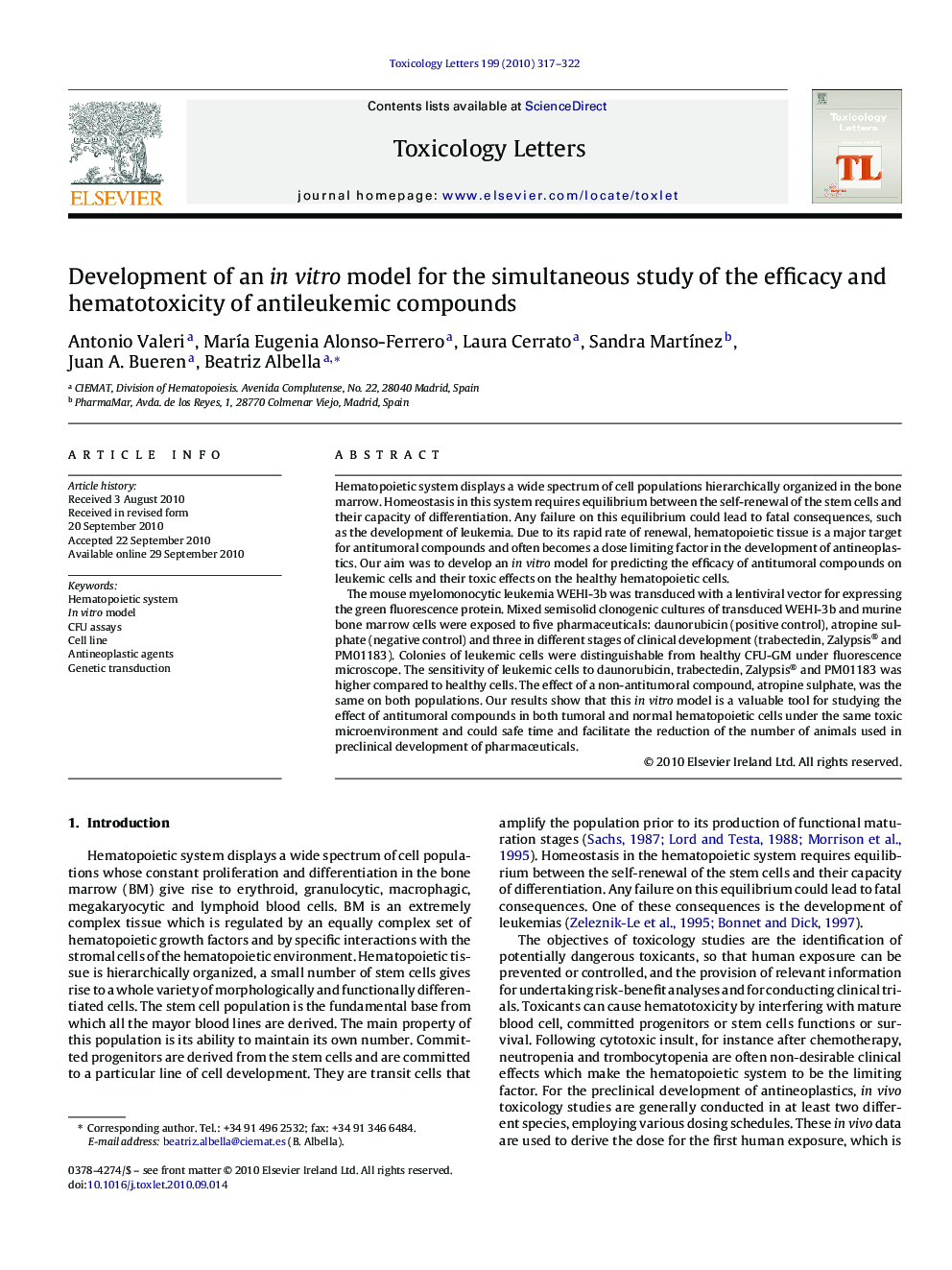| Article ID | Journal | Published Year | Pages | File Type |
|---|---|---|---|---|
| 2600474 | Toxicology Letters | 2010 | 6 Pages |
Hematopoietic system displays a wide spectrum of cell populations hierarchically organized in the bone marrow. Homeostasis in this system requires equilibrium between the self-renewal of the stem cells and their capacity of differentiation. Any failure on this equilibrium could lead to fatal consequences, such as the development of leukemia. Due to its rapid rate of renewal, hematopoietic tissue is a major target for antitumoral compounds and often becomes a dose limiting factor in the development of antineoplastics. Our aim was to develop an in vitro model for predicting the efficacy of antitumoral compounds on leukemic cells and their toxic effects on the healthy hematopoietic cells.The mouse myelomonocytic leukemia WEHI-3b was transduced with a lentiviral vector for expressing the green fluorescence protein. Mixed semisolid clonogenic cultures of transduced WEHI-3b and murine bone marrow cells were exposed to five pharmaceuticals: daunorubicin (positive control), atropine sulphate (negative control) and three in different stages of clinical development (trabectedin, Zalypsis® and PM01183). Colonies of leukemic cells were distinguishable from healthy CFU-GM under fluorescence microscope. The sensitivity of leukemic cells to daunorubicin, trabectedin, Zalypsis® and PM01183 was higher compared to healthy cells. The effect of a non-antitumoral compound, atropine sulphate, was the same on both populations. Our results show that this in vitro model is a valuable tool for studying the effect of antitumoral compounds in both tumoral and normal hematopoietic cells under the same toxic microenvironment and could safe time and facilitate the reduction of the number of animals used in preclinical development of pharmaceuticals.
